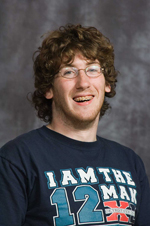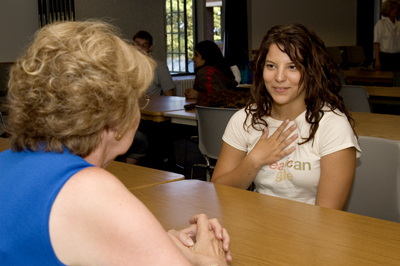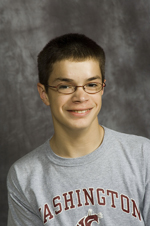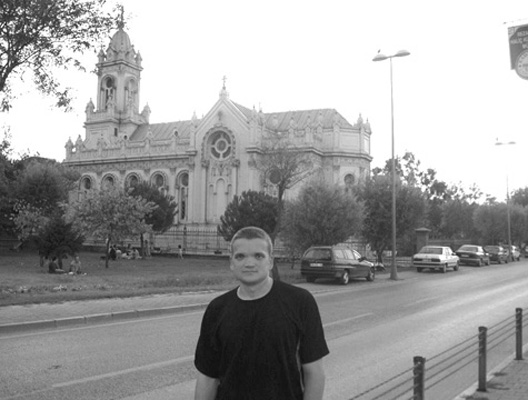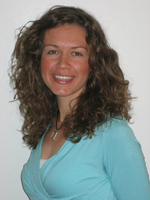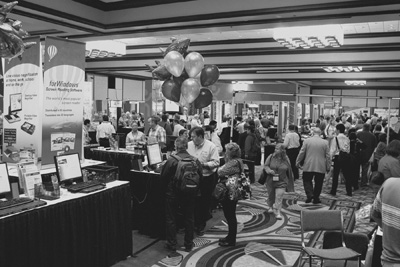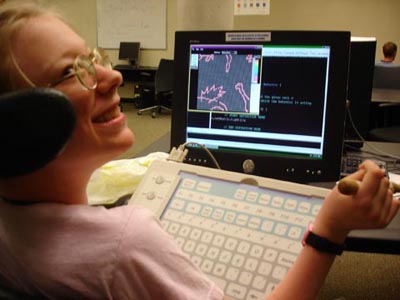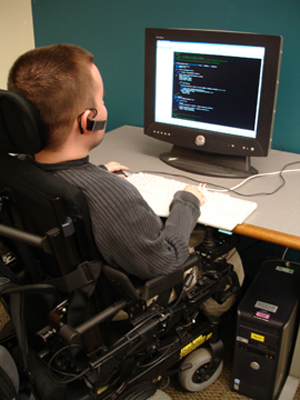Director's Digressions
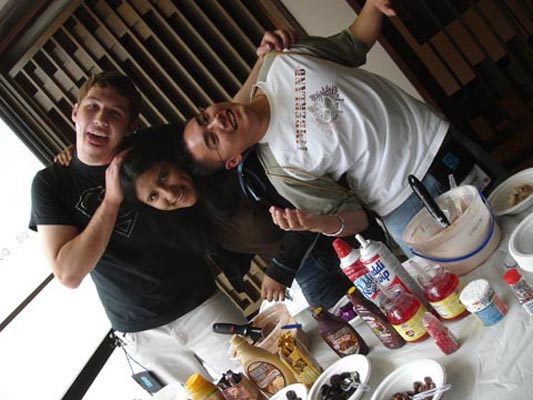
Meet the 2008 DO-IT Scholars
This summer DO-IT will host its annual Summer Study program for DO-IT Scholars. Primary funding for the DO-IT Scholars program is provided by the State of Washington. Additional funding for Scholar activities is provided by Microsoft, the National Science Foundation, and the Boeing Company. For information about the DO-IT Scholars program, consult the DO-IT website.
We welcome the following '08 Scholars to DO-IT! All are residents of Washington and most will be sophomores or juniors in high school this fall.
Yomara writes for her school paper. Her favorite classes are math and English. Yomara, who has spinal muscular atrophy Type II, hopes to be a psychologist and someday analyze how the mind works.
Mack, who has cerebral palsy, lives in SeaTac. His two favorite subjects are retail management and Spanish. Mack plans to major in business in college. He is a DECA officer and is going to Guatemala this summer with Global Visionaries.
Erica lives in Pateros. She enjoys studying human physiology and geometry. Erica, who has an orthopedic impairment, plans to study oncology. She enjoys meeting people and making new friends.
Russell, who has Asperger Syndrome, lives in Renton. He would like to pursue a degree in history and become a teacher, researcher, demographer, journalist, archivist, or a professional in international relations.
Sam's favorite classes are anatomy and pre-engineering design technology. He runs on the track team. Sam has an auditory processing disorder and dyslexia.
Collin lives in Kirkland. His favorite subjects are history and math. Collin, who has dyslexia, plans to get a four-year degree and pursue a career in politics.
Emily has dyslexia and dysgraphia. She would like to study science in college and work for the NASA space program when she graduates.
Derek, who has ADHD and a learning disability, lives in Snohomish. His favorite courses are history and band. He would like to become a middle school teacher.
Nejowa lives in SeaTac. Her favorite subjects are language arts and marketing. Nejowa, who has spinal tuberculosis, is a member of a wheelchair basketball team. She also participates in wheelchair track-and-field. After college, Nejowa hopes to be a fashion designer.
Marco, who has Asperger syndrome, scoliosis, and kyphosis, lives in Ballard. Marco's two favorite classes are math and science. He enjoys robotics, biology, and computer science and hopes to earn a Master's degree in science.
Christopher, who lives in University Place, has autism. His two favorite subjects are history and science. He hopes to become a historian.
Carolyn lives in Spokane. She has a learning disability. English and history are her favorite classes. Carolyn would like to study dental hygiene or counseling in college.
Christine, who has cerebral palsy and a learning disability, lives in Spokane. Her favorite classes are English and history. She would like to be an emergency room nurse or a personal trainer.
Nathan, who has a learning disability, lives in Pullman. Multimedia and foreign languages, particularly Mandarin and Spanish, are his favorite subjects. After college, Nathan hopes to become a digital editor or linguist.
Aaron has dyslexia. He is a member of ACE (Architecture, Constructing and Engineering) and plays Ultimate Frisbee. He is on the cross country running team at school.
Wesley, who has quadriplegia, lives in Toledo. His favorite subjects are history and math. Wesley would like to attend college to pursue a career in child or family psychology.
Eric lives in Burlington. His favorite subjects are math and history. Eric, who has Duchenne muscular dystrophy, plans to study math, science, or history in college and pursue a career as an accountant.
Brianna has cerebral palsy and hearing and vision impairments. Her favorite classes are American Sign Language and peer tutoring. She plans to be a special education teacher. Brianna lives in Woodinville.
Shelby lives in Yakima. Her favorite subjects are American Sign Language and vocational drafting. She wants to become a sign language interpreter. Shelby, who has a health impairment, enjoys participating in debate.
Jeremy, who has cerebral palsy, ADHD, and a learning disability, lives in Cheney. His favorite subjects are science and history. Jeremy wants to study medicine or technology in college. Jeremy holds several national athletic records in sports for people with disabilities.
